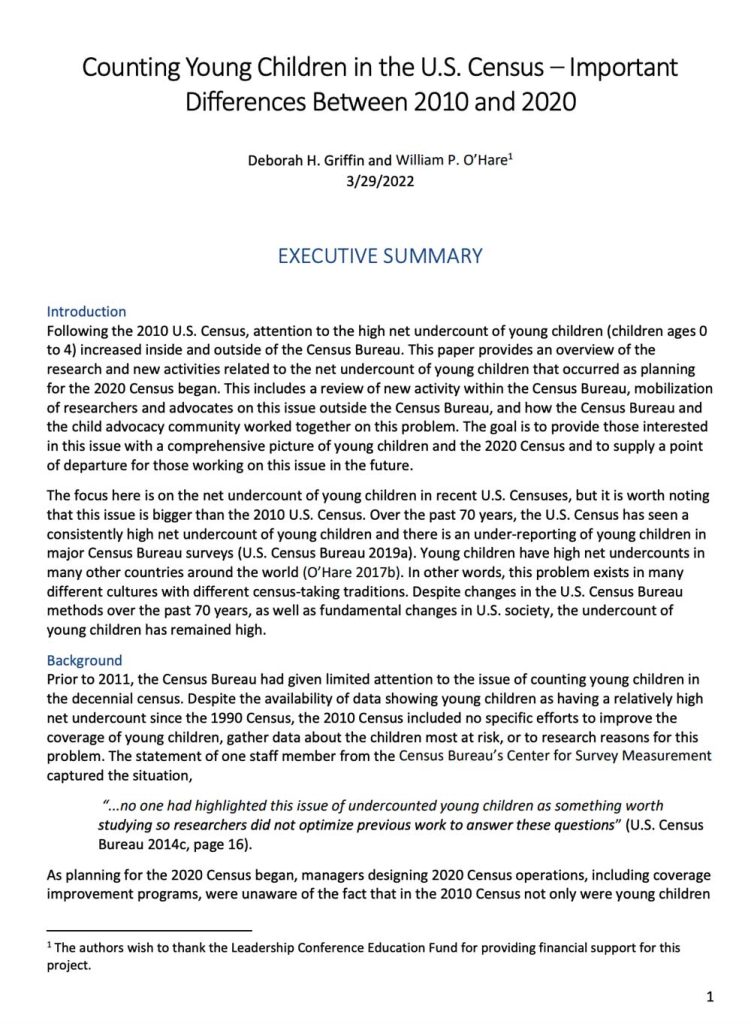This report was originally posted by The Leadership Conference on Civil and Human Rights.
The high net undercount of young children has been an on-going problem in the U.S . Decennial Census. Data released by the Census Bureau last month showed young children (ages 0 to 4) had the highest net undercount of any age group, as they did in the 2010 Census as well. This report covers the developing organizational infrastructure inside and outside the Census Bureau in response to this issue. In contrast to the 2010 Census, when the high undercount of young children was no more than an afterthought at the Census Bureau, there were a series of activities and developments inside the Census Bureau related to the 2020 Census and efforts to reduce the high net undercount of this vulnerable group. Likewise, stakeholders outside the Census Bureau mobilized under the auspices of the Count All Kids campaign to help grassroot organizations and trusted voices in historically undercounted communities get a more accurate count of young children. Moreover, the report provides a record of a very fruitful cooperative working arrangement between the Census Bureau and child advocates.









Count All Kids Steering Committee Response to Updated Standards for Race and Ethnicity Data Collection
Statement from the Count All Kids Steering Committee Members Response to U.S. Office of Management